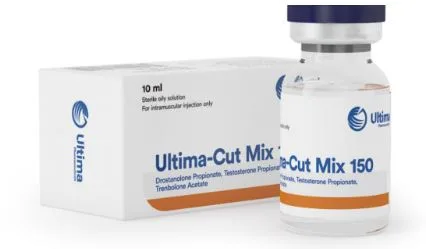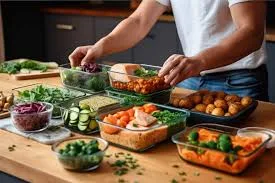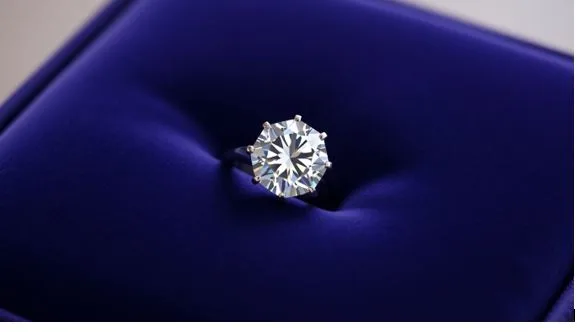Quick and Easy ML to OZ Conversion for Recipes
If you’ve ever followed a recipe from a different country, you’ve probably run into this problem: the ingredients are listed in milliliters (ml), but your measuring cup only shows ounces (oz). It can be frustrating when you’re in the middle of cooking or baking and don’t know how to make sense of those numbers. The good news? Converting milliliters to ounces is simple once you understand how it works.
In this guide, we’ll break down how to easily convert ml to oz, share a few kitchen-friendly tips, and explain why getting these conversions right actually matters more than you might think.
What Do Milliliters (ml) and Ounces (oz) Mean?
Before we dive into the conversion, let’s understand what these units measure.
Milliliters (ml)
The term ‘ml’ stands for milliliters, a metric unit used to measure liquid volume.
- 1 milliliter = 1/1000 of a liter.
- It’s commonly used in countries that follow the metric system, like most of Europe and Asia.
- You’ll often see ml measurements on water bottles, juice cartons, and cooking recipes.
A quick tip: if you’re used to cooking in cups and teaspoons, 1 teaspoon is roughly 5 ml, which can help you estimate small quantities.
Ounces (oz)
The term ‘oz’ stands for ounces, and in the kitchen, it usually refers to fluid ounces (fl oz) , a unit for measuring liquid volume in the imperial system, commonly used in the United States.
- 1 US fluid ounce = about 29.57 ml.
- You’ll find ounces listed on measuring cups, beverage cans, and most American recipes.
It’s worth noting that the UK ounce is slightly different (1 UK fl oz = 28.41 ml), but since most online recipes today use US measurements, we’ll focus on those.
The Simple ML to OZ Conversion Formula
Here’s the easy part:
To convert milliliters (ml) to ounces (oz), just use this simple formula:
Ounces = Milliliters ÷ 29.57
That’s it!
For example:
- 100 ml ÷ 29.57 = 3.38 oz
- 250 ml ÷ 29.57 = 8.45 oz
- 500 ml ÷ 29.57 = 16.91 oz
If you’re using a calculator or an online tool, it’ll do the math instantly. But knowing this formula helps when you’re working by hand or want to double-check your measurements.
Quick ML to OZ Conversion Chart
Here’s a handy chart you can keep for reference when cooking or baking:
| Milliliters (ml) | Ounces (oz) |
| 50 ml | 1.69 oz |
| 100 ml | 3.38 oz |
| 150 ml | 5.07 oz |
| 200 ml | 6.76 oz |
| 250 ml | 8.45 oz |
| 300 ml | 10.14 oz |
| 400 ml | 13.52 oz |
| 500 ml | 16.91 oz |
| 750 ml | 25.36 oz |
| 1000 ml (1 liter) | 33.81 oz |
This chart covers most common kitchen measurements and can help you quickly adjust recipe quantities without pulling out your phone or searching online.
Why Getting the Conversion Right Matters
You might think being off by a few milliliters doesn’t matter, but in cooking—especially baking it can make a real difference. Here’s why:
- Consistency: Baking is a science. Too much or too little liquid can completely change the texture of your dough or batter.
- Flavor Balance: When liquids like oil, milk, or extracts are off, the overall taste can shift.
- Cooking Time: Incorrect measurements can affect how long food takes to cook or bake.
For instance, if a recipe calls for 240 ml (8 oz) of milk and you accidentally pour in 300 ml, your batter may become too runny, resulting in flat pancakes or dense muffins.
Everyday Examples of ML to OZ Conversion in the Kitchen
Let’s make this more practical with real-world examples.
Example 1: Measuring Coffee
If your coffee recipe calls for 180 ml of water, how much is that in ounces?
Use the formula:
180 ÷ 29.57 = 6.08 oz
So, you’ll need just a bit more than 6 ounces of water.
Example 2: Filling a Water Bottle
Suppose you’re drinking from a 500 ml water bottle.
500 ml ÷ 29.57 = 16.91 oz
That’s roughly 17 oz, or about 2 cups of water.
Example 3: Following an American Recipe
If you’re following a U.S. recipe that calls for 8 oz of cream, and your measuring cup only has ml markings, you’ll need:
8 × 29.57 = 236.56 ml
So, roughly 237 ml of cream.
How to Remember the Conversion Easily
You don’t have to memorize every number. Just remember these two shortcuts:
- 1 ounce ≈ 30 ml
It’s not exact, but it’s close enough for most casual cooking. - Divide by 30
For quick math in your head:- 300 ml → about 10 oz
- 150 ml → about 5 oz
- 600 ml → about 20 oz
If you’re baking, use a more precise number (29.57) or rely on a conversion calculator for accuracy.
Tips for Easier Kitchen Conversions
Even the best cooks need help converting units quickly. Here are a few time-saving tips:
1. Use a Measuring Cup with Both Units
Many modern measuring jugs have both ml and oz markings. This eliminates the need for manual conversions.
2. Keep a Small Chart on Your Fridge
Print out the conversion table above and stick it somewhere visible. It’ll save you from interrupting your cooking to Google conversions.
3. Try an Online ML to OZ Converter
If you don’t want to do the math yourself, use an online converter. DigiCalc lets you enter any number of milliliters and instantly see the result in ounces. It’s quick, accurate, and perfect for when you’re busy in the kitchen.But DigiCalc keeps it simple and ad-free, ideal for everyday cooking measurements.
4. Learn the Common Recipe Equivalents
Once you cook often, you’ll naturally remember:
- 250 ml = 1 cup = 8.45 oz
- 120 ml = ½ cup = 4.06 oz
- 60 ml = ¼ cup = 2.03 oz
This makes converting recipes much smoother.
Common Mistakes to Avoid When Converting ML to OZ
Even with simple math, there are a few pitfalls to watch out for:
- Mixing Up Weight and Volume:
Remember, oz (fluid ounces) measure liquid volume, not weight. For solids, you’ll need ounces by weight, which is a different measurement entirely. - Using UK vs US Ounces Incorrectly:
Always check the recipe source. UK recipes use slightly smaller ounces, which can affect baking results if precision matters. - Rounding Too Much:
For everyday cooking, rounding is fine. But for baking or making sauces, keep decimals (e.g., 29.57 ml per oz) for better results.
Quick Reference: Common Kitchen Liquids in ML and OZ
| Ingredient | 1 Cup (US) in ML | 1 Cup (US) in OZ |
| Water | 240 ml | 8 oz |
| Milk | 240 ml | 8 oz |
| Olive Oil | 220 ml | 7.4 oz |
| Honey | 340 ml | 11.5 oz |
| Vinegar | 240 ml | 8 oz |
This chart helps when you’re following recipes with common ingredients and need quick, accurate conversions.
Conclusion:
Converting milliliters (ml) to ounces (oz) doesn’t have to be confusing. Once you remember that 1 oz = 29.57 ml, everything else falls into place. Whether you’re making coffee, mixing cocktails, or baking a cake, this simple math ensures your recipes turn out just right.
Here’s a quick summary to keep in mind:
- Formula: Ounces = Milliliters ÷ 29.57
- Quick Tip: 1 oz ≈ 30 ml (good for everyday use)
- Use tools: Conversion charts, dual-marked measuring cups, or online calculators.
Next time you see a recipe calling for 200 ml or 500 ml, you’ll know exactly how to convert it with no stress, no guessing, and no ruined recipes.
Cooking is all about creativity, but when it comes to measurements, a little precision goes a long way







